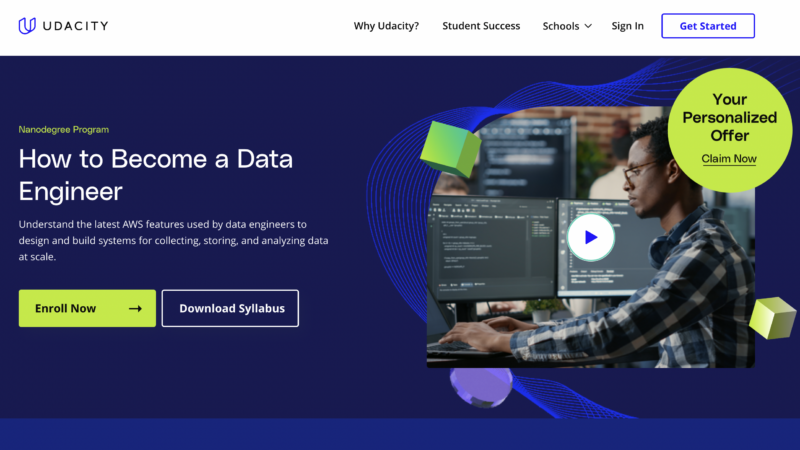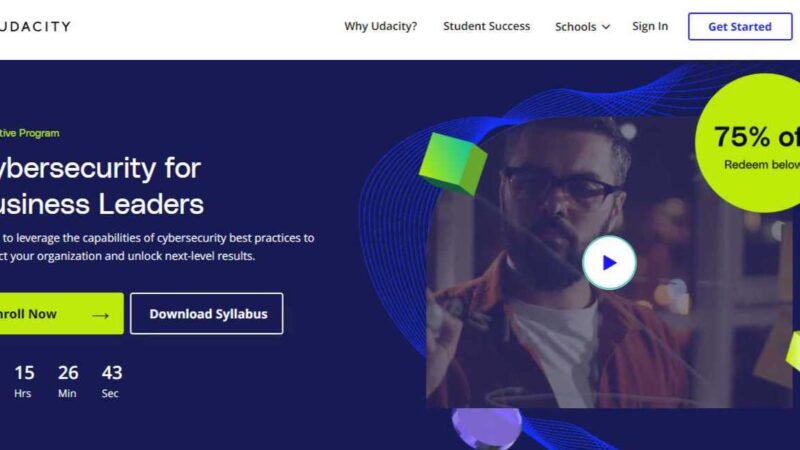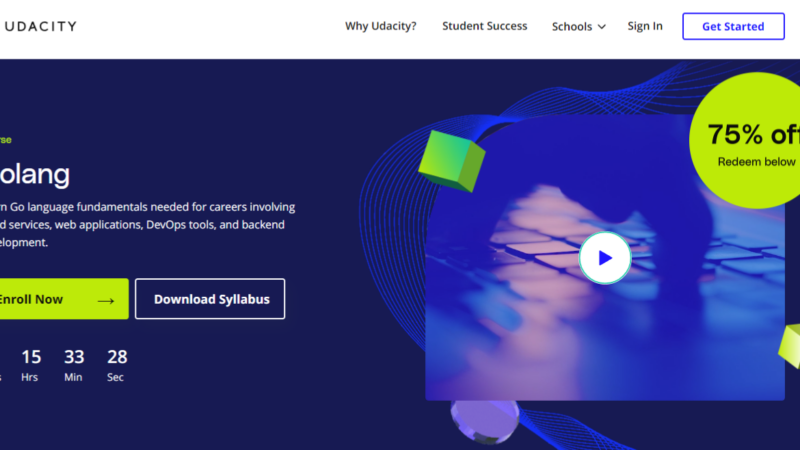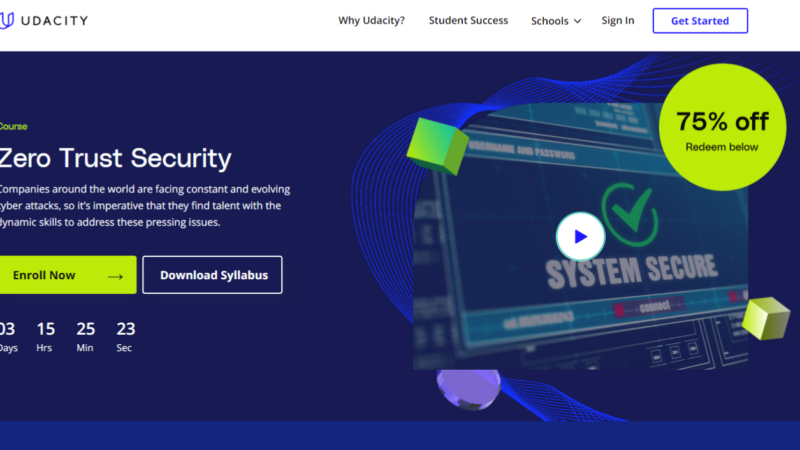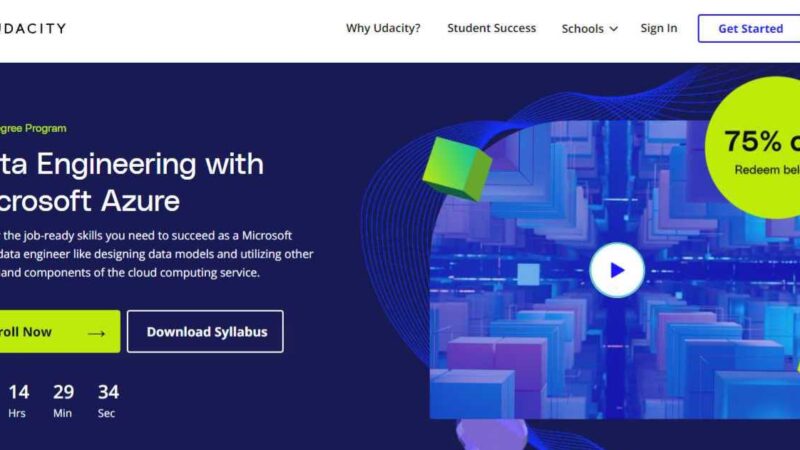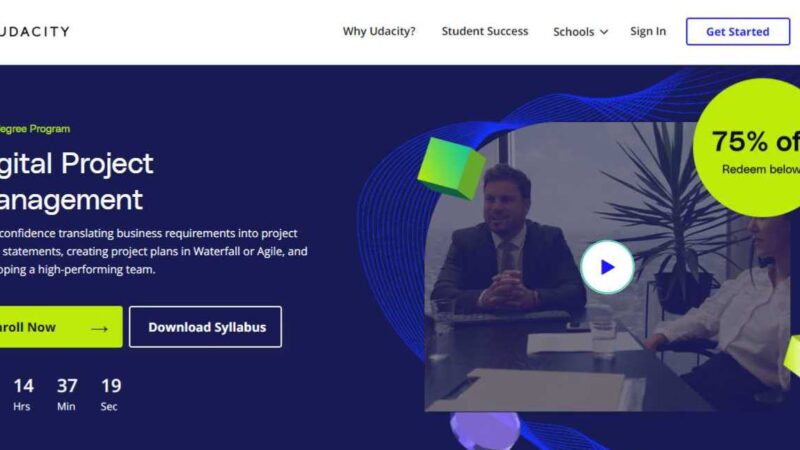Udacity Machine Learning Engineer for Microsoft Azure Nanodegree Review

Azure is becoming a common platform for cloud-based development, able to scale and support advanced machine learning tactics. Learning the software, you’ll have a ton of opportunity, jumping into a hot career that becomes more in demand year after year. To get the skills necessary to break into the field, you can try Udacity’s Become a Machine Learning Engineer for Microsoft Azure Nanodegree. To help you decide if it’s worth your time (and money), we have taken a deeper look into the course, providing you with all you need to know to make your choice. Before we begin, let us first introduce you to Udacity.
About Udacity
Udacity is an online academy that is dedicated to bringing all things IT online for learners to enjoy. For more than a decade, they have been hard at work developing courses that incorporate up to date technology and methods to keep learners current. Udacity is accredited, and a great opportunity for anyone looking to break into a career in IT.
Nanodegree Extras
Udacity nanodegrees are the most popular item on the site. All of them are developed by Udacity’s team of content creators. Plus, there are a few nanodegrees that were developed in collaboration with top industry names like Uber, Google, and Amazon, just to name a few. When you sign up for a nanodegree, you score:
Flexible Learning
This is Udacity’s promise that you can learn anytime from anywhere. Log in when you want and start learning, just be sure not to miss your due dates!
Real Hands-On Projects
All nanodegrees come with projects to help you solidify your skills. These projects are meant to mimic real industry issues, helping you have useful skills from the get-go.
A Learning Community
You can chat with fellow learners and get social, getting to know your future peers in the world of machine learning development.
Your Own Mentor
Just in case anything goes wrong, you’ll have your very own mentor. You never know when the technology might decide to just start acting up.
Career Services
Included with career services is the chance to clean up your resume and also partake in a mock interview. Use them both to get you prepped for your big day.
A-List Instructors
Last but not least, each nanodegree comes with A-list instructors. Udacity picks instructors with amazing educational and professional experience, bringing students a great opportunity to learn from someone that has made it and is working in the exciting field of machine learning.
Meet your Instructors
Udacity goes out of its way when it comes to selecting instructors, looking for the best and most knowledgeable in the industry. For the Become a Machine Learning Engineer for Microsoft Azure Nanodegree, these are your instructors.
Noah Gift
Noah’s areas of specialty are Machine Learning and AI. He is a successful author, including a number of published books including the bestseller Python for DevOps. With so much knowledge to share, he often teaches and consults at top universities and companies across the industry, sharing his areas of expertise.
Alfredo Deza
Alfredo is a software engineer and open-source developer. He had helped companies rebuild themselves from the ground up, building complex infrastructures that get them back up and running better than before. His goal is to always look for the best environments for companies, combining his in-depth knowledge with some of the most advanced tools and technologies that are out there. On top of being an amazing tech-savvy developer, he is also a former Olympic athlete; he definitely has it all!
Erick Galinkin
Erick is a hacker, working for the good guys. It is his goal to help companiesamp up their security practices and apply top methods of cybersecurity to their workflows. Apart from working with companies in the industry, he also works as a researcher for the Montreal AI Ethics Institute. There he takes a look at how ethics apply to DevOps.
Soham Chatterjee
Soham works with Intel as a software innovator. He has worked on some pretty high-tech topics, including Edge computing and IoT Hardware. His industry and educational experience make him a great candidate to introduce some of the more advanced topics students will find in the course, breaking them down with explanations and examples.
What are the Prerequisites?
Anyone can sign up for this course, no matter what their experience with technology is. However, you should consider Udacity’s suggestions before jumping in and signing up. They suggest that learners looking to take this course should have:
- Experience programming with Python
- Worked with basic statistical methods and algebra
- An understanding of data distributions
- A bit of work with machine learning concepts
- A basic-level understanding of Azure
If you read through these and thought ‘this course is out of my league’, no need to sweat. You can still get on the path to becoming a machine learning engineer. Udacity suggests taking their Introduction to Machine Learning Nanodegree, where you can find all of the info mentioned above to get you started.
Course Breakdown
This course is meant to provide learners with the skills to build and deploy sophisticated Machine Learning solutions with the help of today’s advanced tools. Students will walk away having learned how to use Azure, learning the platform from the inside out by the end of the course.
Lesson 1: Using Azure Machine Learning
The first lesson is all about how Azure can help take business operations to the next level. You’ll see how to configure machine learning pipelines with Azure and manage them from one easy to use platform.
Project: Optimizing an ML Pipeline
One of the most useful things that you can do with the knowledge from this course is to compare and contrast solutions for companies. This gives them options, something that all of them are looking for. In this project, you’ll work with a machine learning pipeline, building, and testing it to find the optimal hyperparameters. You’ll then analyze your finding, seeing which options are the best and more cost-effective, providing your client with options to choose from.
Lesson 2: Machine Learning Operations
There is a lot of work that goes into the development of complex systems. In this section, you’ll see how to operationalize machine learning, getting a glimpse of how to select the best targets, and deploying models. You’ll also get a look at how to solve problems before you push off into deployment, helping to make things run smoothly from start to finish.
Project: Operationalizing Machine Learning
In this project, you’ll take what you learned from the first 2 sections and tie it all together to train a model with AutoML and push it to production. You’ll use your knowledge of Azure to configure cloud-based options that help you deploy and demonstrate your efforts to your client.
Capstone Project: Training and Deploying a Machine Learning Model in Azure
The course ends with a capstone project, setting you free to work with the Azure system all on your own. You get to choose the model that you want and the data you want. After that, you’ll have to work from start to finish to upload data, set your parameters, and create a model. You will need to train two models total for your project, comparing and contrasting them at the end to find which method performs better.
How Long Does It Take?
When you look at it, this course really only consists of two sections and a final capstone project. It may not seem like much but, you’ll probably need some time in between to study up on concepts so that you can complete your capstone correctly. You can take all the time you need but, keep in mind you have to meet deadlines for projects.
For a bit of an estimate, Udacity claims that, by dedicating 5 to 10 hours a week to this course, you could have it over and done within 3 months. That’s right! 3 months is all you need to be on the path to becoming a machine learning developer. Before you get too excited, you might want to think about the cost, which is directly affected by the time you take.
What’s the Course Cost?
The total course cost depends on the time you take to complete it. You have a few options to choose from, perhaps one better for you than the other. First of all, you have the ‘pay as you go’ price that grants you monthly access to the course for as long as you need it. While it might seem amazing for your social calendar, it actually can add up, coming out to $359 per month. Second, you have Udacity’s price, which grants their estimated 3 months of access and comes with a 15% discount. Doing it this way, you’ll pay $927.
Both options are great but, it is up to you to decide. If you’re confident that you can finish the course in less time than Udacity’s recommendation, then pay per month to save a few bucks. If not, however, you could risk going over the Udacity deal, even if you take the same amount of time.
Learner Reviews
Because this course is brand new, there are no reviews about it yet. Taking a look at Udacity’s track record, it is not hard to see why the online academy has earned its name. Here is what a few previous learners had to say about their experience with Udacity.
“I love its interface, it is simple and very easy to use, besides the platform itself is very well developed, I have never had any problem with the tools it makes available to me. The audio quality and video resolution offered by the classes are amazing, the quality is perfect.I also like that you find many free courses, that’s how I started and it was one of the best things that have happened to me.” – Andrea D.
“Udacity is a great platform in essence, because it has a very friendly and easy to understand interface, plus it’s super fast. The quality of the classes is much higher, because the resolution of the video is excellent and the audio quality is of another level, really at a technical level it is a very well developed platform that offers you a quality education.” – James M.
“Udacity is one of the best e-learning platform currently, it has got a wide variety of courses from different fields and group of topics, from video lectures to articles, in-modules quizzes, peer-graded, rigorous and competitive projects. The course materials and contents are super helpful and up to the mark, allowing the learners to understand and work on each and every topic both theoretically and practically via the projects.” – Mohammed M.
A Look into the Job Market
According to a report from job site Indeed, machine learning engineer was the best job of 2019 due to growing demand and high salaries.2019 was also the year that the field saw a salary increase, one that had an average of $146,085 with a growth rate of 344 percent. Talk about some promising figures! But what are the chances that you could land a job?
More and more businesses are turning to the incorporation of machine learning techniques and software into their interface, using it to help them find solutions to their development issues. As the number of business making the switch to advanced methods of data management, they need the help of someone with the knowledge to take their day-to-day tech need to the next level.
You could quite possibly have a job waiting for you right after your certification, jumping right into the field with hands-on experience thanks to Udacity.
Is It Worth It?
While the choice is ultimately yours, we don’t see any reason why you wouldn’t choose a nanodegree with Udacity. It’s cheaper than a 4-year degree, comes with hands-on experience, and only takes a few months to complete. Sounds like a dream come true if you ask us!
